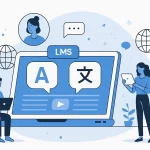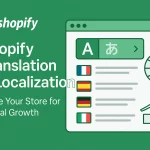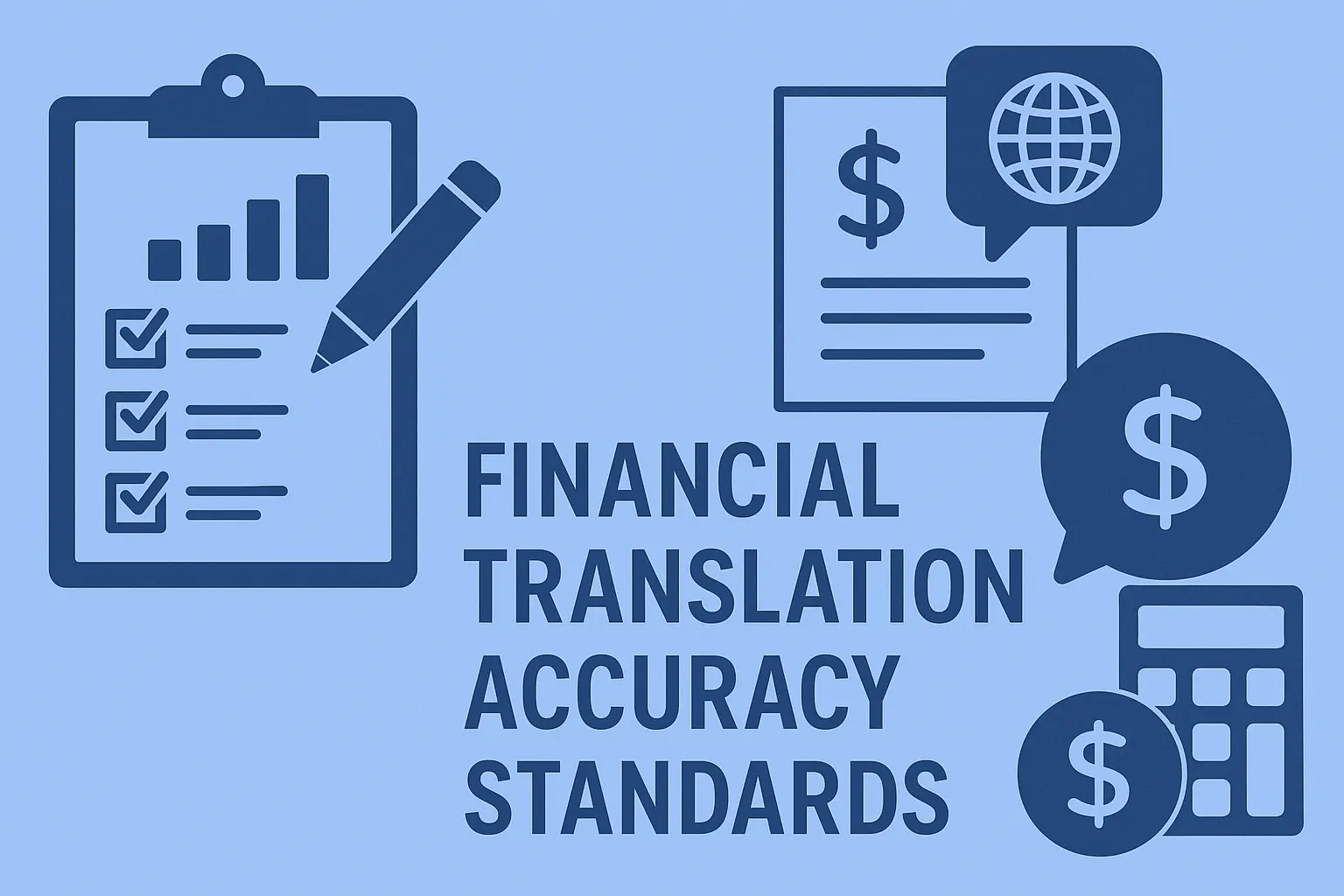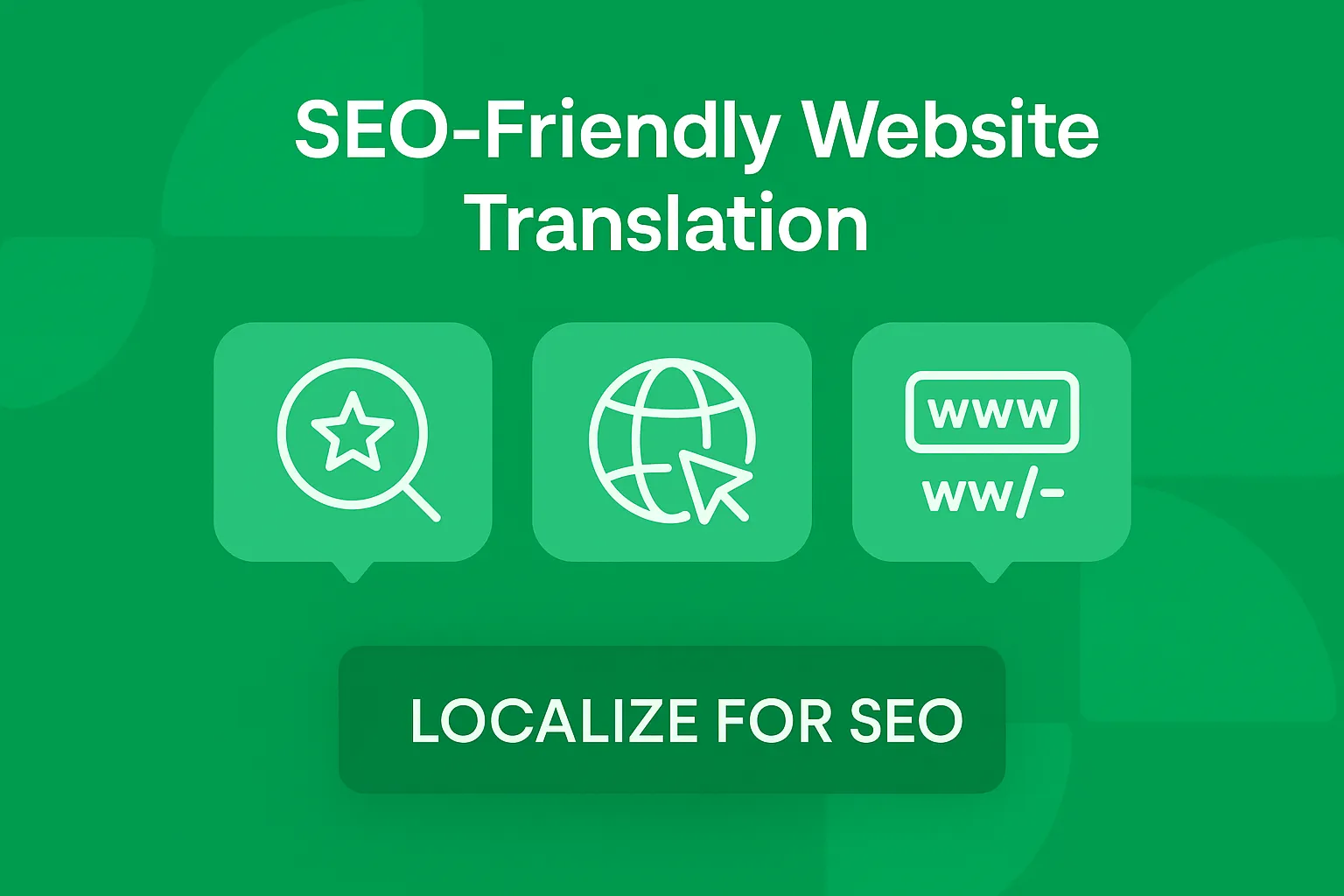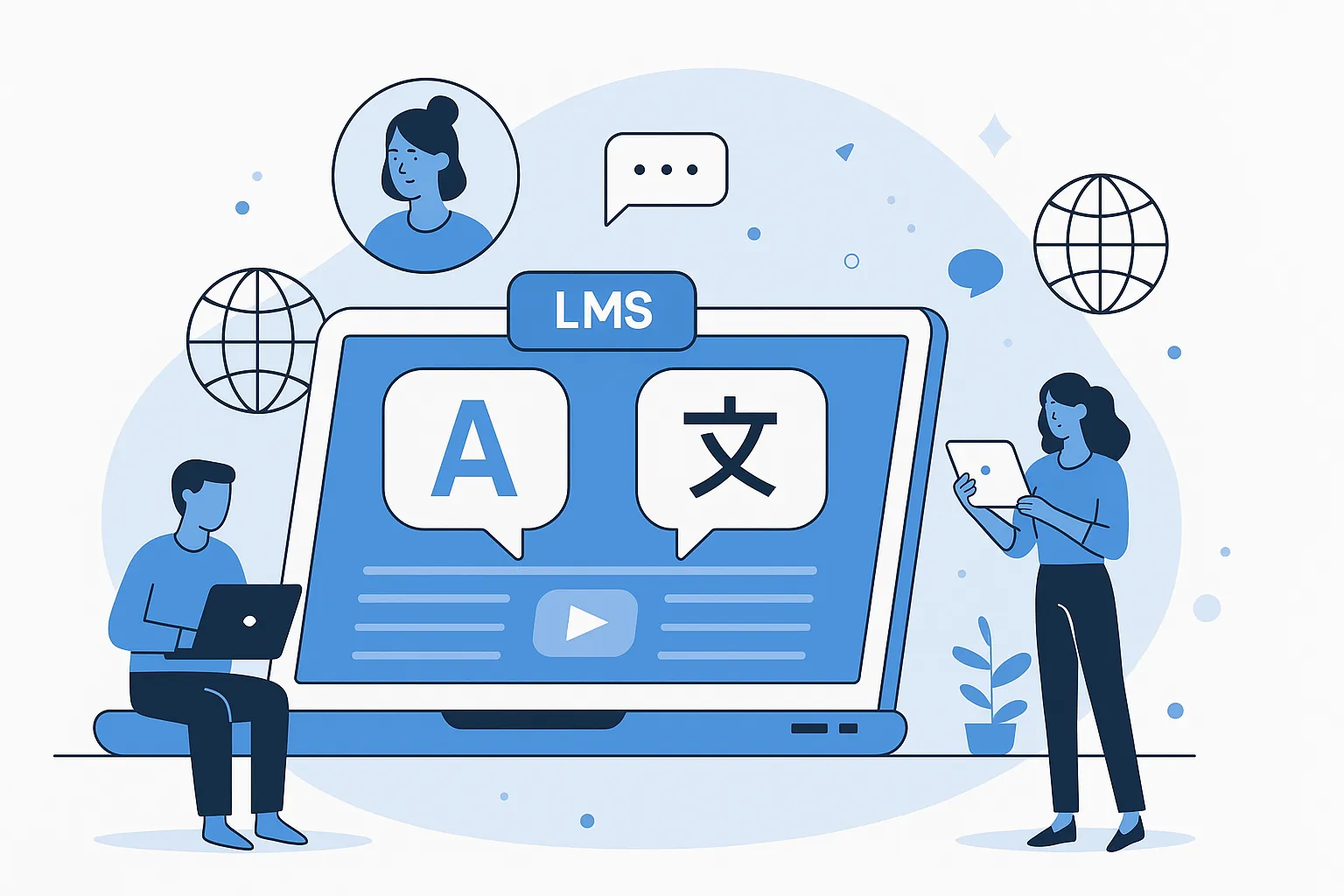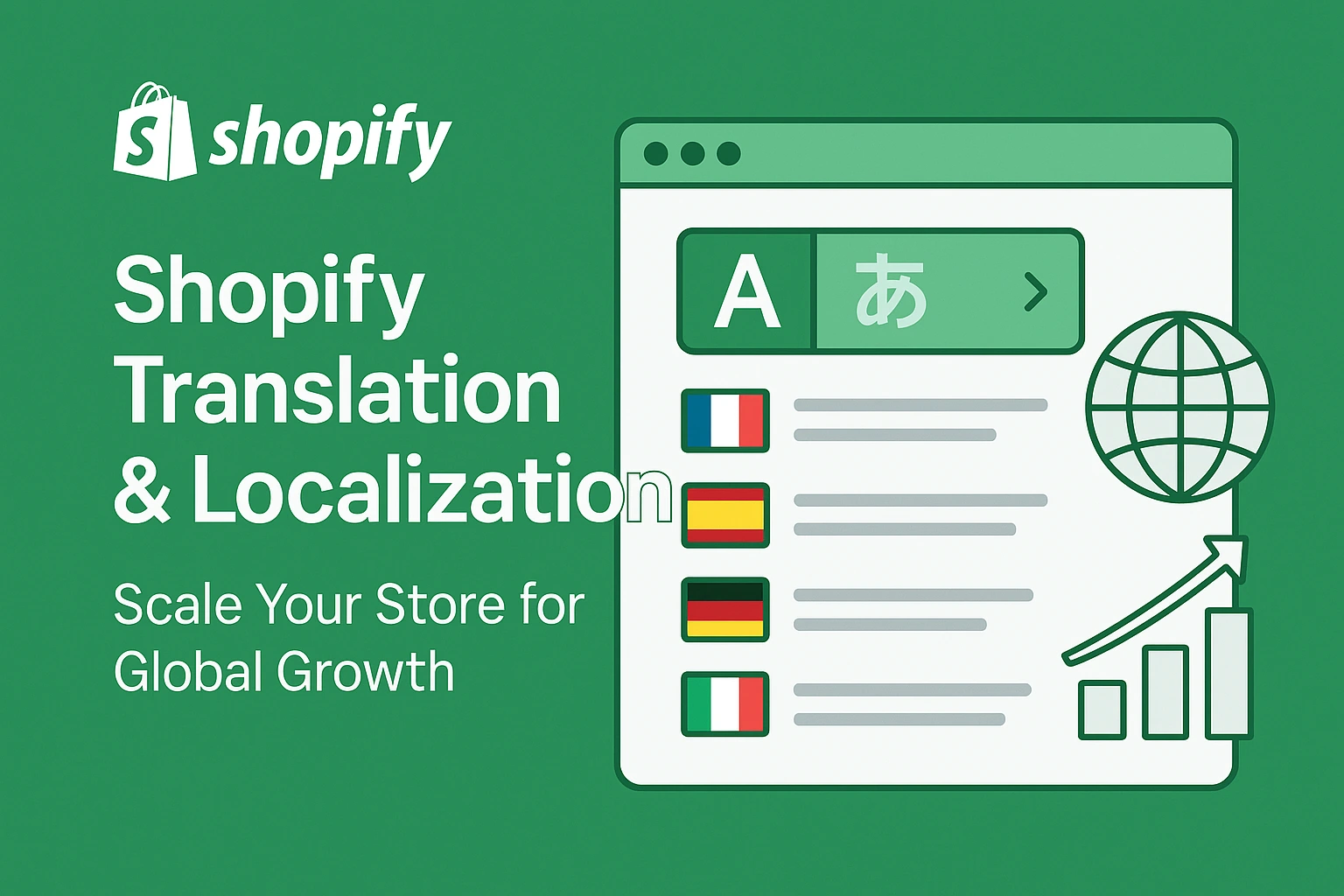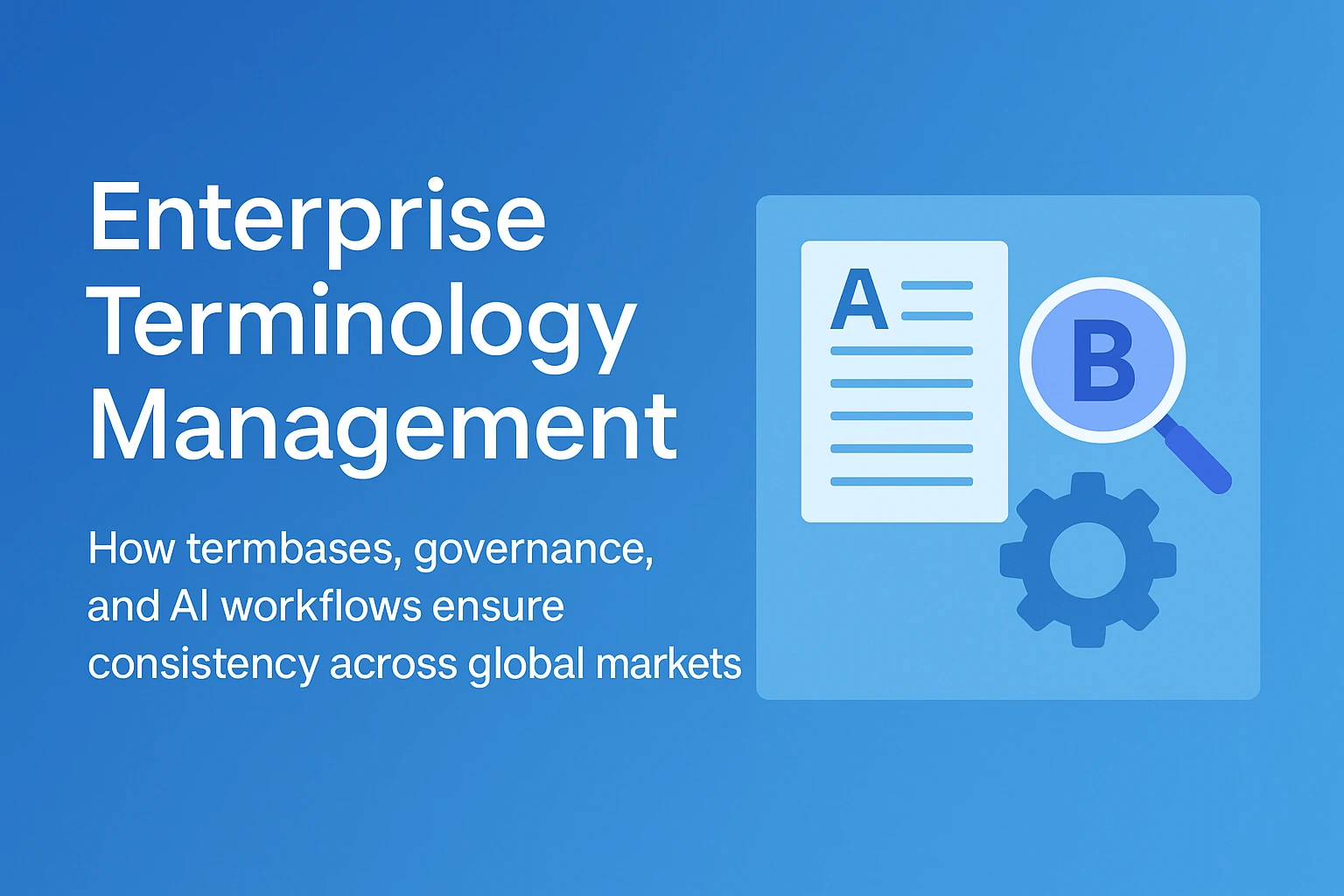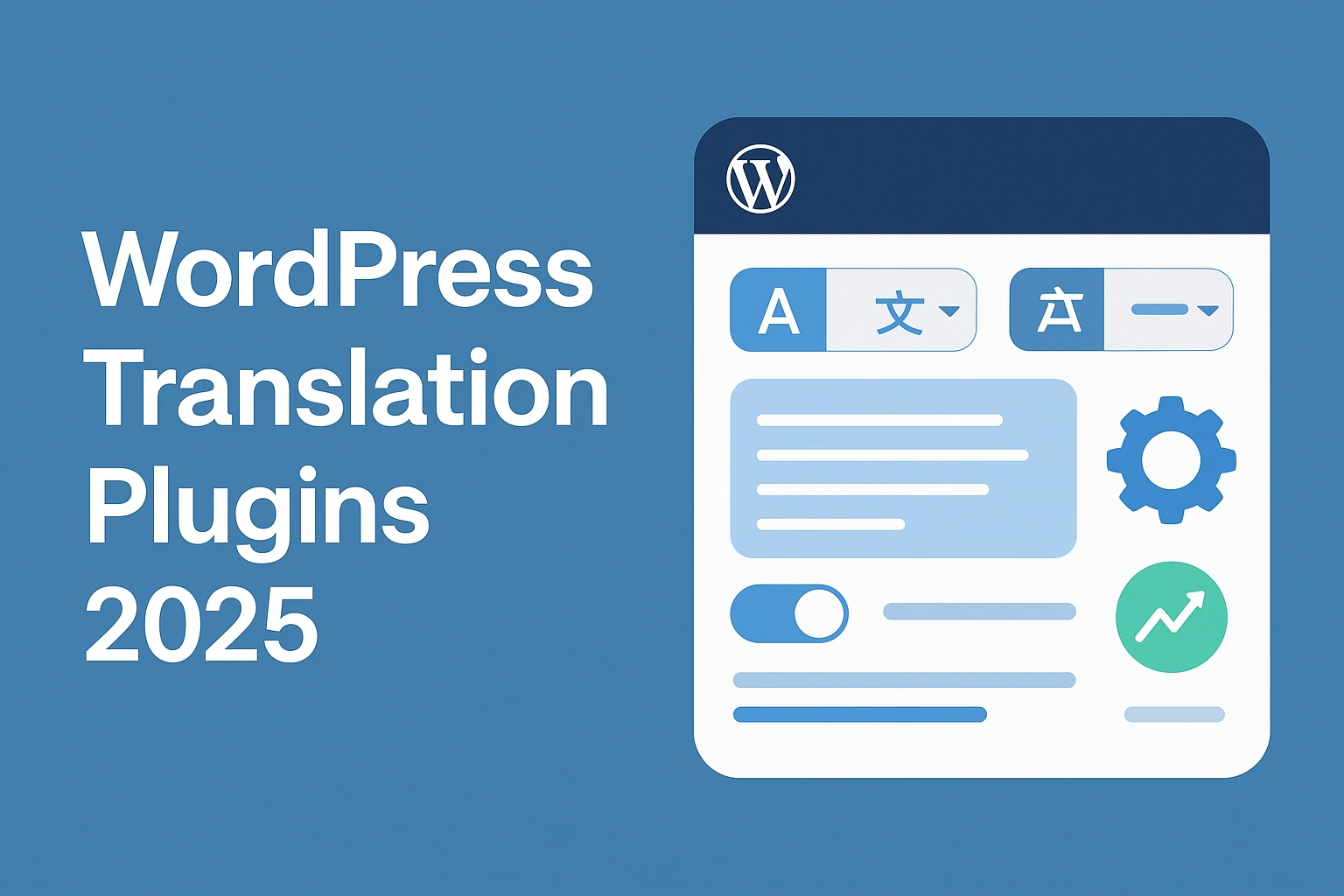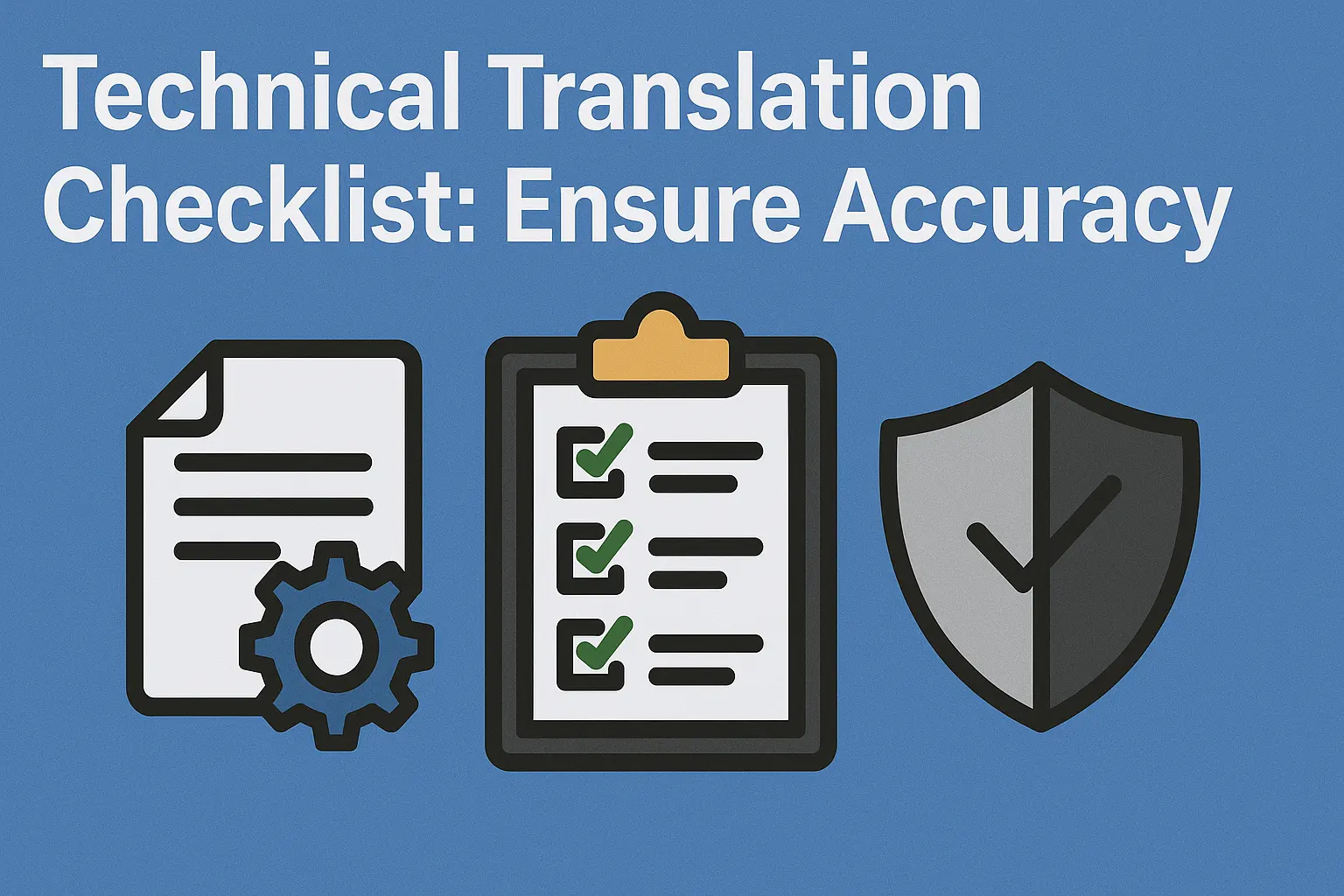Financial documents are constantly changing hands – from auditors to investors to legal authorities. Now, pair that with global-scale operations, multiple jurisdictions, and multilingual stakeholders, and there’s a lot at stake, and accuracy and consistency are non-negotiable. Even seemingly minor errors can trigger audits, costly reworks, and, in some cases, legal liabilities.
In short, a financial translation must meet accuracy standards that are consistent across all markets and pass all audits without a hurdle.
This guide explores all aspects of financial accuracy standards so you can understand best practices, identify potential pitfalls, and make informed decisions when managing multilingual financial documents.
What does “accuracy” mean in financial translation? (standards, scope, metrics)
Financial translation is the process of translating financial documents, such as annual reports, audits, contracts, and regulatory filings, into another language. This is a very sensitive task, as it requires absolute accuracy, consistency, compliance, and cultural relevance for the target audience.
Accuracy can be measured in two ways:
- Process Standards(ISO 17100 scoring):
ISO certifications ensure qualified linguists, structured workflows, and quality controls. This provides confidence that the translation is handled professionally and systematically, minimizing human error.
- Outcome Metrics(MQM/DQF scoring):
This scoring evaluates errors, severity, and overall consistency. By quantifying quality, these metrics give procurement teams a transparent, auditable view of performance, helping ensure that translations meet both internal standards and regulatory requirements.
Which standards govern quality? (ISO 17100, ISO 18587, MQM/DQF)
Accuracy in financial translations is a non-negotiable. This entails that numbers, terminology, legal references, and formatting remain precise and compliant across languages and jurisdictions.
There are two standard benchmarks that are accepted worldwide, which are the ISO certifications and the MQM/DQF scorings. ISO 17100-certified workflows and MQM/DQF scoring provide a strong foundation, but a comprehensive approach considers multiple facets of accuracy.
- ISO certifications:
Ensures qualified linguists, structured workflows, and systematic quality checks, giving procurement teams confidence in how translations are produced. There are several types of ISO certifications based on the fields. The most common two are:
-
ISO 17100:2015:
ISO 17100:2015 provides requirements for the core processes, resources, and other aspects necessary for the delivery of a quality translation service.
-
ISO 18587:2017:
ISO 18587:2017 outlines the requirements for the post-editing of machine-translated content, ensuring that the final output meets the quality standards expected in professional settings.
- MQM/DQF scoring
The MQM (Multidimensional Quality Metrics) and DQF (Dynamic Quality Framework) framework provides a structured, standardized approach to assessing translation quality.
It categorizes errors by type and severity, offering a quantitative scoring system that allows teams to measure consistency, accuracy, and adherence to client-approved terminology.
Why financial translation is different from general business translation
Financial translation sits at the crossroads of language and domain expertise, requiring translators to combine advanced linguistic skills with specialized financial knowledge to ensure accuracy and compliance.
The main difference in financial translation and general business translations would be in sensitivity. Because unlike general business documents, and slight mistake in translating the terminology, or numbers, can have serious consequences, including investor misinformation, regulatory violations, and potential legal liabilities.
Here’s a table that shows a few examples of how a seemingly minor mistake can cause significant consequences:
| Translation Error | Potential Impact |
| Mislabeling EPS (Earnings Per Share) | Investor misinformation, regulatory scrutiny |
| Decimal point errors | Misstated financial figures, compliance violations |
| Incorrect currency conversion | Misleading reporting, cross-border confusion |
| Misinterpretation of IFRS/GAAP terms | Audit issues, legal exposure |
| Missing footnotes or annotations | Loss of context, misinformed decision-making |
| Inconsistent terminology | Reduced clarity, damaged credibility |
Accuracy, consistency, and adherence to standards like IFRS or GAAP are therefore non-negotiable, making financial translation a high-stakes discipline that goes far beyond typical business copy.
Regulatory & framework alignment (IFRS, GAAP, SEC/ESMA)
Financial translation must align with the regulatory and accounting frameworks in every market it is accessing. Ensuring compliance requires strict adherence to standards like IFRS, GAAP, and rules from regulatory authorities such as the SEC and ESMA.
Let’s take a closer look.
IFRS alignment: terminology control & updates
The IFRS Foundation provides official translations of its standards, and these must be strictly followed when localizing financial documents.
Even small deviations can cause ambiguity, leading to a lot of unnecessary and costly backlogs. To maintain accuracy:
- Keep a living termbase that tracks all IFRS updates and official translations.
- Align all internal glossaries, translation memories (TMs), and QA checks with the most recent IFRS revisions.
- Ensure linguists are trained to understand context-specific financial terms (e.g., “comprehensive income,” “equity instruments”) to avoid semantic drift.
SEC & ESMA examples: what must be in English and how it’s validated
The Securities and Exchange Commission (SEC) mandates that foreign-language documents submitted for filings be accompanied by an accurate English translation or summary. This ensures that regulators and investors can reliably interpret financial statements.
Similarly, the European Securities and Markets Authority (ESMA) provides official translations of MiFID II guidelines and related frameworks. Adherence ensures:
- Consistency of terminology across languages and jurisdictions.
- Compliance with reporting obligations for investment firms and financial institutions.
- Alignment of localized investor communications with regulatory expectations.
Accuracy workflow: from intake to audit trail
Ensuring accuracy in financial translation requires a structured, end-to-end workflow that combines linguistic expertise, regulatory compliance, and traceable quality controls.
This could look something like this:
- Intake & Scope:
Clearly define the project scope, document types, target languages, deadlines, and compliance requirements. Precise intake prevents misunderstandings and sets expectations for all stakeholders.
- Risk Triage:
Assess the risk level of the content. High-stakes items (e.g., IFRS/GAAP disclosures, audit reports) demand human-only translation, whereas lower-risk content may leverage AI-assisted translation with post-editing (MTPE).
- Glossary/IFRS Termbase Lock:
Establish approved terminology and lock the termbase to ensure consistency. Track all IFRS updates and align with client-specific glossaries and translation memories (TMs).
- Two-Linguist TEP (Translation → Editing → Proofreading):
Implement a multi-step linguistic review, where one linguist translates and another independently edits/proofs. This reduces errors and preserves compliance-critical nuances.
- LQA (MQM/DQF):
Conduct Linguistic Quality Assurance using MQM/DQF scoring to measure severity and frequency of errors, ensuring consistency, accuracy, and adherence to regulatory standards.
- Financial & DTP Checks:
Verify that numerical data, tables, footnotes, and formatting are accurate. Ensure proper representation of currencies, decimals, and accounting conventions.
- Client Sign-Off:
Obtain final approval from the client, ensuring all legal, regulatory, and business requirements are met before publication.
- Audit Pack:
Maintain a full audit trail of revisions, termbase usage, QA reports, and client approvals. This documentation supports regulatory audits and internal compliance reviews.
Risk tiers & when to require human-only vs. MTPE
Financial translation spans a wide spectrum of content types, each carrying different levels of regulatory, legal, or reputational risk.
Managing all that is a daunting task, so organizations often opt for a tiered risk approach that divides the risks into classes and dictates the workflow appropriately – purely human, AI-assisted (MTPE), or a hybrid.
Let’s break it down:
- Tier A – High-Risk / Compliance-Critical:
This tier includes documents where accuracy is non-negotiable and errors could trigger regulatory penalties.
- Examples: audited financial statements, regulatory filings, SEC/ESMA reports, and tax submissions.
- Workflow: Human-only translation by senior linguists with domain expertise, followed by a second-linguist review and full LQA.
- Why: These assets require maximum scrutiny; MTPE is too risky due to the severe consequences of mistranslation.
- Tier B – Medium-Risk / Public-Facing Communications:
In this category, while the stakes are significant, some AI-assisted translation can be leveraged for efficiency.
- Examples: Investor relations content, press releases, and marketing collateral
- Workflow: Human-first approach, optionally supported by MTPE for preliminary drafts, followed by human post-editing and QA.
- Why: Balances speed and cost with accuracy, ensuring that external messaging maintains professionalism and compliance.
- Tier C – Low-Risk / Internal or Informational Content:
This tier contains the low-risk content as aforementioned. They often carry limited regulatory or legal risk.
- Examples: Internal communications, company newsletters, or operational memos
- Workflow: MTPE allowed, optionally reviewed by a single linguist.
- Why: Efficiency and scalability are prioritized, while the risk of non-compliance or financial misstatement is minimal.
Here’s a table to sum it all up:
| Risk Tier | Content Examples | Recommended Workflow | QA / Review Level |
| A (High-Risk) | Filings, audited reports, regulatory submissions | Human-only, senior translator + second-linguist review | Full LQA (MQM/DQF), glossary/termbase locked |
| B (Medium-Risk) | Investor relations, PR, marketing collateral | Human-first; MTPE optional | Post-editing, targeted LQA for brand & compliance terms |
| C (Low-Risk) | Internal communications, operational memos | MTPE allowed | Light review or spot-check by a linguist |
DTP & numerical fidelity: tables, figures, footnotes
Financial documents contain tables, charts, footnotes, and embedded figures that carry critical numerical information. And frankly speaking, these numerical data are often more important than the text in the documents. Hence, errors are simply not acceptable – no matter how minor.
Here are a few measures you can take to avoid mishaps when dealing with them:
- Source Formats to Prepare:
Dealing with data collected from multiple sources that are in different formats is a major headache. Converting them into a standardized format is a good idea. This ensures translations preserve formatting, formulas, and embedded data.
This process starts with properly preparing source files into formats like:
- Excel & CSV: For tables, financial statements, and dashboards. Pay attention to formulas, number formatting, and cell references.
- InDesign & IDML: For annual reports, brochures, and regulatory filings with complex layouts. Ensure fonts, styles, and footnotes are preserved.
- XBRL: Standardized financial reporting formats require careful mapping of tags, labels, and numeric values.
Always flag non-standard formats in advance, and supply editable files so DTP specialists can maintain accuracy and layout integrity.
- Accuracy Checks & QA Measures:
Once source files are prepared, rigorous QA processes ensure that the translated content matches the original in both language and data.
This process includes:
- Bilingual table verification: Compare source and target tables to ensure alignment of figures, headers, and row/column labels.
- Figure tie-outs: Ensure totals, subtotals, and cross-references match the original document.
- Decimal and currency conventions: Maintain correct decimal separators, thousand separators, and currency symbols as per local standards.
- Footnotes & references: Verify that footnotes, endnotes, and references are translated correctly and maintain the original numbering and context.
Combine linguistic QA with numerical QA, leveraging a two-linguist workflow plus in-context DTP reviews to prevent errors from slipping through.
Team & Governance (Who Ensures Accuracy?)
Financial translation is a high-stakes process, ensuring regulatory compliance, numerical accuracy, and consistency across complex documents, is of the utmost priority.
Achieving this requires a structured team and clear governance processes. Each role has a defined responsibility, and oversight is stacked to minimize errors and maintain efficiency.
Here are the key roles:
- Financial SME Linguist:
They are the ones directly responsible for the translation process of the high-risk content. They expertise in financial terminology, IFRS/GAAP standards, and market-specific conventions.
- Reviser:
They are the 2nd layer of the structure. They review translations for accuracy, consistency, and adherence to terminology guidelines, ensuring that numerical data, tables, and figures are faithfully reproduced.
- LQA Lead:
Manages quality assurance processes using MQM/DQF scoring frameworks, flags errors, and provides actionable feedback. Ensures that both linguistic and numerical QA standards are met.
- Project Manager:
Oversees timelines, coordinates linguists and reviewers, and ensures regulatory and corporate compliance. Maintains communication with stakeholders and approves final deliverables.
Security & confidentiality controls
Financial documents contain highly sensitive data. Ensuring their confidentiality is paramount, especially when translations involve multiple linguists and remote workflows.
Best practices to ensure security and confidentiality include:
- Non-Disclosure Agreements (NDAs): All linguists, revisers, and project personnel sign binding NDAs before accessing any content.
- Secure Client Portals: Files are exchanged via encrypted, access-controlled platforms rather than email or unsecured cloud storage.
- Encryption: All data is encrypted both in transit and at rest, protecting against unauthorized access.
- Least-Privilege Access: Linguists and reviewers are given access only to the files and segments necessary for their work, minimizing exposure.
- Data Residency & Compliance: Files are stored and processed according to requested residency requirements to comply with local data protection regulations, including GDPR.
These measures, combined with structured workflows and audit trails, ensure that sensitive financial content remains protected, compliant, and traceable throughout the translation process.
Why Us: Accuracy with Speed, Visibility, and Cost Control (Circle Translations)
Circle Translations stands out by offering a hybrid approach that combines the speed of AI with the precision of expert linguists. This ensures every project meets the highest standards of accuracy, compliance, and cultural nuance – critical for industries where mistakes carry real risk.
Below are our stats:
- 120+ Languages Covered: from global standards to rare dialects.
- Native Subject-Matter Experts: specialists in finance, legal, medical, and technical domains.
- ISO-Aligned Quality Assurance: Every file undergoes a rigorous two-step review.
- Data Security First: NDA-backed workflows, encrypted platforms, and GDPR compliance.
- 24/7 Project Management: continuous coverage across global time zones.
- Flexible Pricing Models: choose AI-only, hybrid (AI + human), or human-only workflows depending on risk level and budget.
RFP checklist: Financial Translation Accuracy Standards
When issuing an RFP for financial translation, procurement teams should demand evidence of quality, compliance, and reliability.
A procurement-ready checklist should include:
- Two-linguist process: every translation is reviewed by a second linguist to minimize errors and maintain consistency.
- SME credentials: subject-matter experts with proven experience in financial, regulatory, or audit content.
- IFRS/GAAP termbase governance: standardized terminology for international and regional accounting standards.
- LQA scorecard & sample report: measurable quality data to demonstrate vendor performance.
- DTP numeric QA: specialized checks to ensure figures, decimals, and tables remain accurate across formats.
- Security pack: documentation of NDA, encryption, and data-handling protocols.
- SLA/metrics: defined turnaround times, accuracy thresholds, and penalties for non-compliance.
- References/case studies: evidence of experience with banks, fintechs, or listed companies.
Conclusion:
Financial translation is not just about converting words from one language to another—it’s about maintaining absolute accuracy, consistency, and compliance across borders. From ISO standards and MQM/DQF scoring to IFRS and GAAP alignment, every step in the process must be carefully managed. Errors, even small ones, can lead to major financial, legal, or reputational risks. By following structured workflows, using qualified linguists, applying rigorous QA, and protecting sensitive data, organizations can confidently deliver translations that meet global accuracy standards. In short, financial translation must always be treated as an audit-grade process where precision is non-negotiable.
FAQ Hub: Financial Translation Accuracy — FAQs
Which standards define accuracy for financial translation?
ISO 17100 sets the resource and process requirements (qualified linguists, revision by a second linguist), ISO 18587 covers MT post-editing, and MQM/DQF provides error typology and scoring for LQA. Use these standards as evidence in RFPs and require vendors to supply LQA reports showing MQM/DQF results.
How do IFRS and GAAP impact terminology choices?
Align translations with the IFRS taxonomy and official IFRS translations where available; use GAAP-consistent phrasing for U.S. filings. Maintain a governed termbase that records the source, approved translation, and the regulatory context for each term.
Do regulators require English translations?
Often yes: the SEC typically expects English translations or permitted summaries for foreign-language exhibits, and ESMA’s multilingual guidance underlines the need for consistent translations across markets. Always check specific regulator rules for your filing jurisdiction.
Is MTPE acceptable for financial content?
MTPE can be acceptable for lower-risk materials (internal reports, some PR) if post-edited under ISO 18587 and subjected to strict LQA. For audited statements, regulatory filings, and safety-critical numbers, require human-only workflows with a senior reviser.
What accuracy controls apply to tables and numbers?
Implement bilingual table checks, numeric tie-outs, currency/decimal convention verification, and cross-reference checks for notes and tables. Require DTP-safe exports (Excel/XBRL/IDML) and an independent numeric QA pass before client sign-off.
What are the risks of inaccurate financial translation?
Inaccuracies can lead to regulatory rejection, fines, investor misinformation, and reputational damage; even small numeric or unit errors may have major legal/financial consequences. Treat high-stakes documents as audit-grade deliverables with full traceable QA artifacts.





